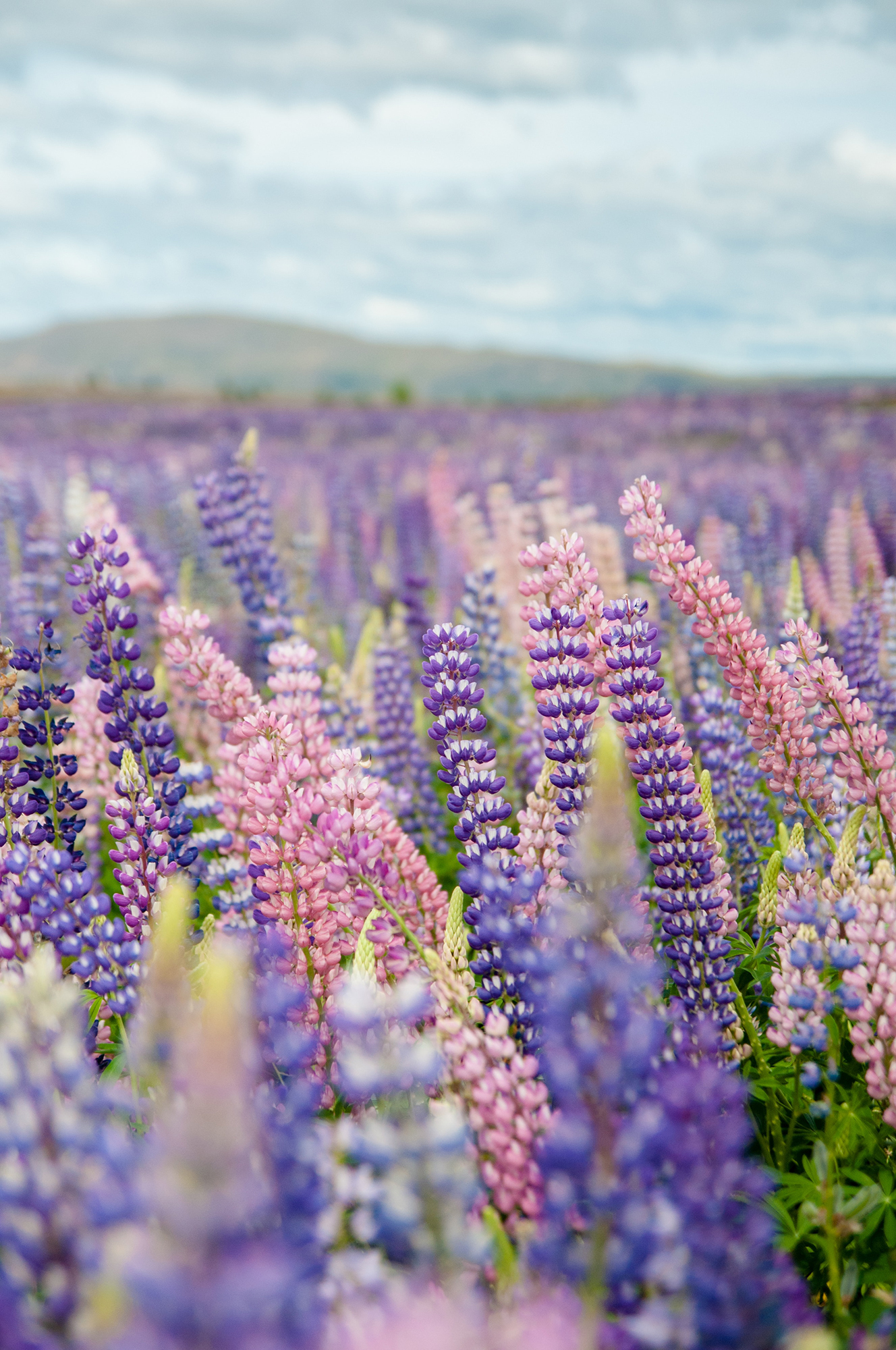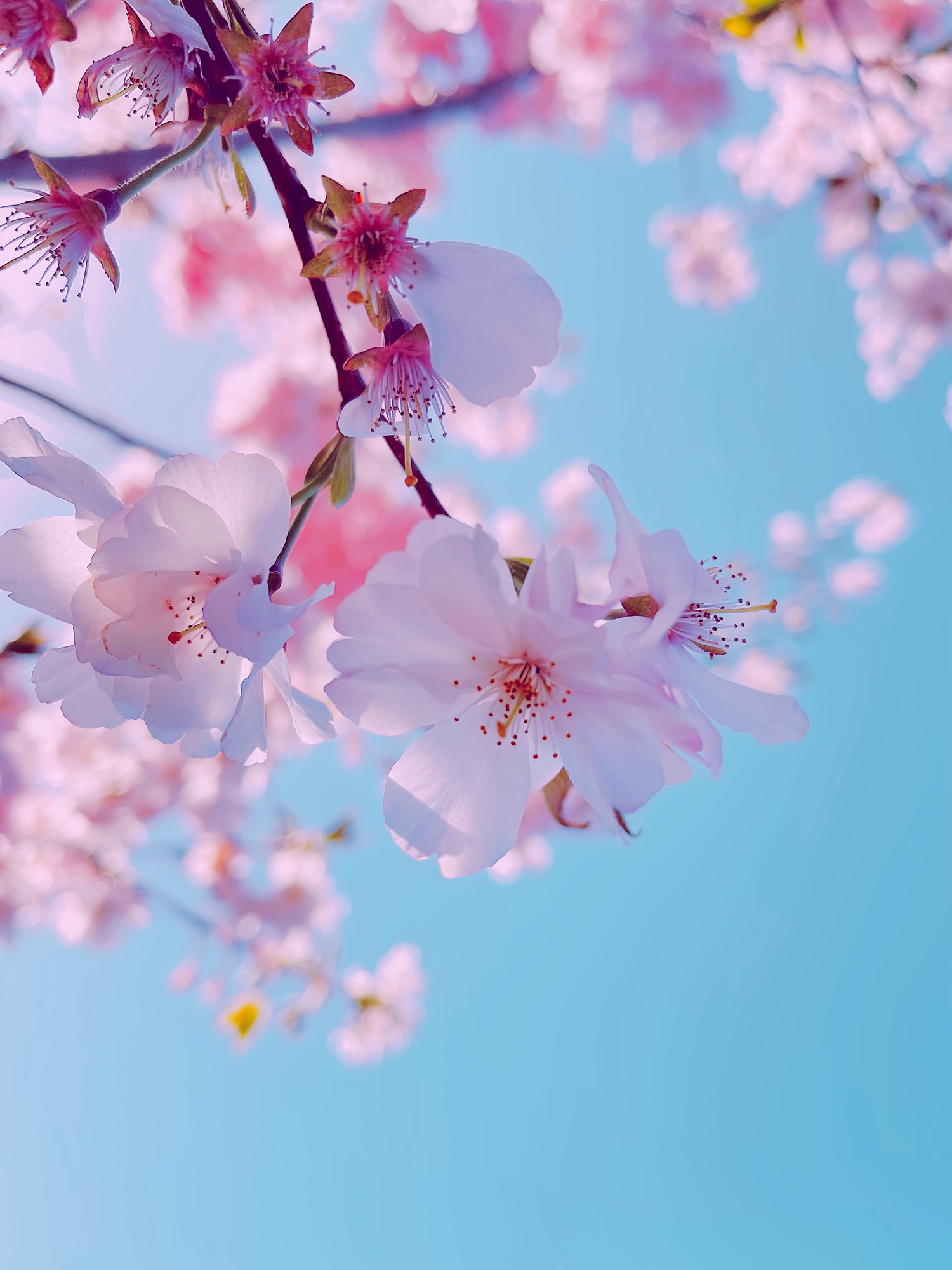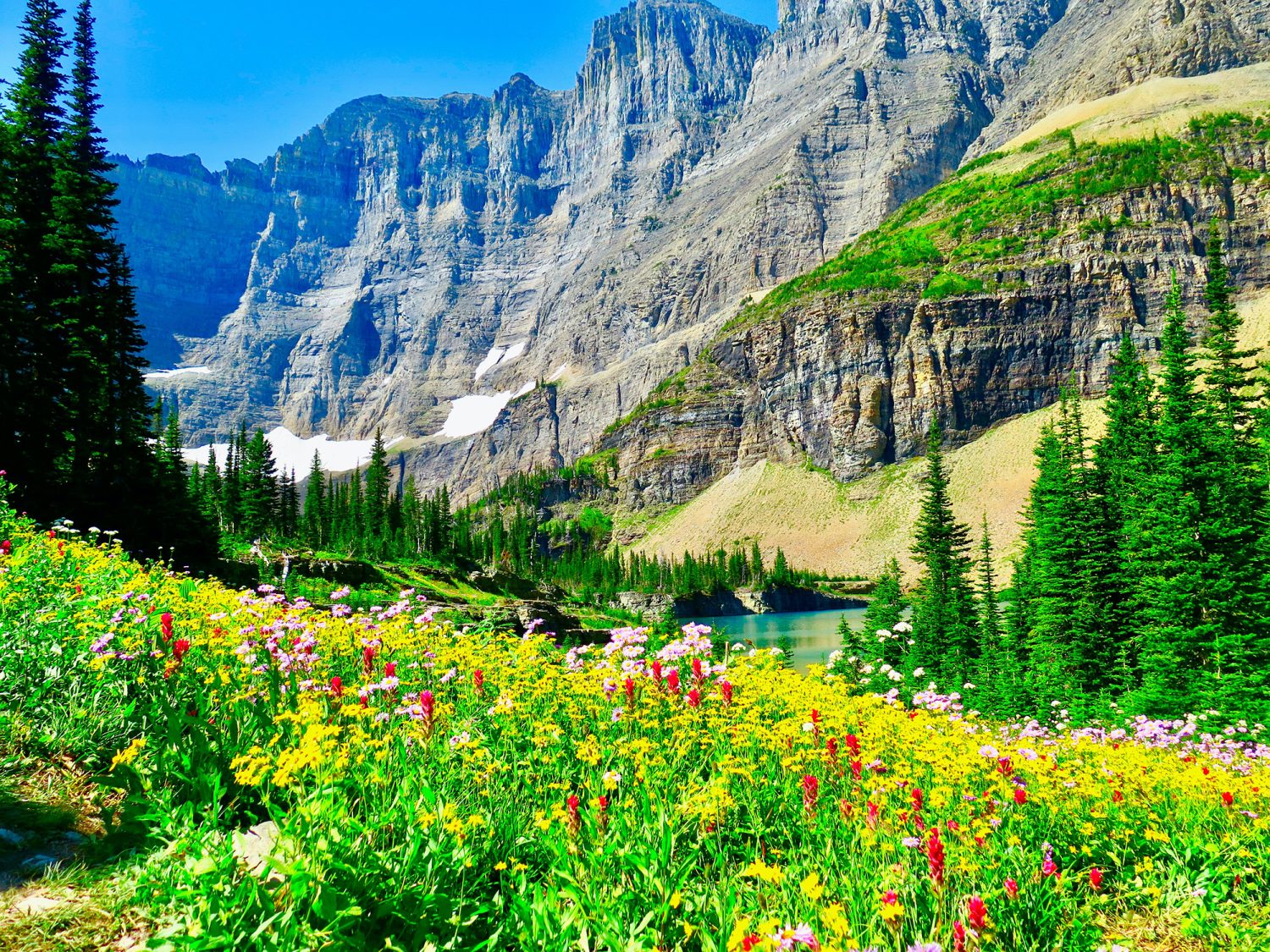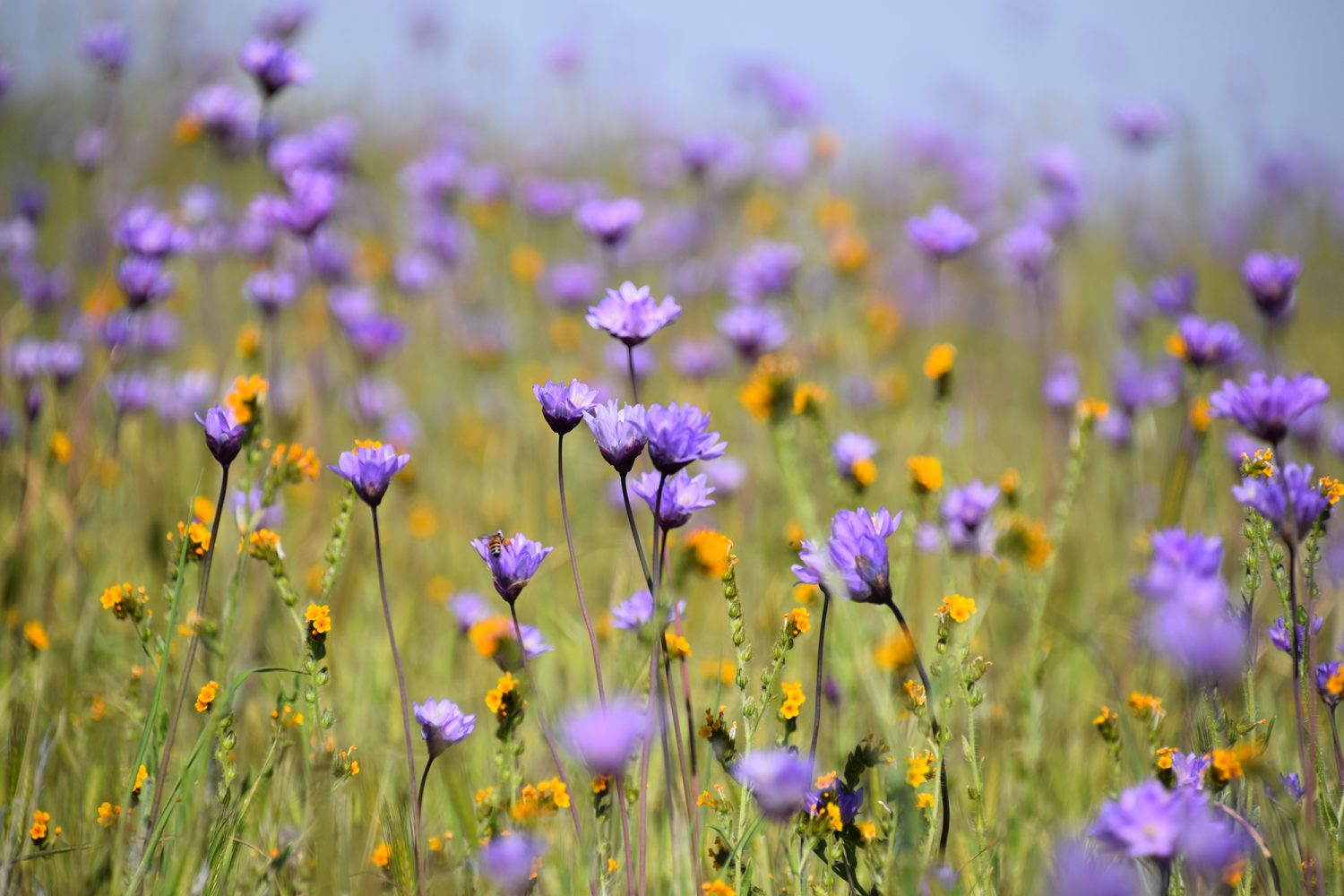Master Spring Landscape Photography with These Expert Tips
‘Spring is sprung, the grass is riz’ goes the old ditty. And spring is certainly a time of vibrancy and fresh growth, with days becoming brighter and less gloomy. It’s also a happy time for photographers as we emerge from the cold of winter into a more enjoyable environment to be out shooting in.
In this article, I’m going to show you how to capture all the new life and beautiful colours of spring. Here’s what we’ll cover:
- Camera gear
- Camera settings
- Tips for photographing in spring
 Image 002 – Soft spring colours and a dramatic sky add interest to this spring image.
Image 002 – Soft spring colours and a dramatic sky add interest to this spring image.
Photograph by Delphine Ducaruge.
Camera Gear
The great thing about photographing landscapes is that you don’t need masses of specialist camera equipment. You can take photos with a smart phone if that’s all you have at hand. But, of course, a proper DSLR or mirrorless camera will give you the best results. Spring landscapes obviously benefit from using a wide-angle lens to capture a whole scene, but I’d also recommend a telephoto lens to capture spring flowers and blossoms. You’ll also need a lightweight tripod and a remote trigger for your camera to capture longer exposures. I’m a huge fan of the Peak Design tripods, but they’re not the cheapest!
Important Lesson: Landscape photography is one area where filters are still very useful. I’d recommend carrying a polariser filter, a graduated neutral density (GND) and a neutral density (ND) filter. A polariser will help to reduce glare from reflections and help to deepen the saturation of colours. A GND filter will allow you to balance exposures – for instance when you have a very bright sky and a darker foreground, a ND filter will allow you to use longer exposures without overexposing your image. You can try adding in either of these filters to some of the techniques I suggest below.
Lastly, remember that spring weather can be changeable (more on that later) so a waterproof rucksack and rain cover for your camera could come in very useful.
 Image 003 – A small depth of field highlights these delicate cherry tree blossoms.
Image 003 – A small depth of field highlights these delicate cherry tree blossoms.
Photograph by Yan Liu
Camera Settings
Like all photography genres and techniques, there are no absolutes when it comes to photographing spring landscapes. However, there are some basic settings you can apply to your camera to have it ready to go when you set out.
Make sure you’re shooting in manual mode so that you have complete control over your exposure triangle and use RAW so that you have the most options in post-production. It’s also essential that you have complete control over your AF-points and where your camera is focusing. Select a single AF-point (or a small group if that’s easier and your camera offers the option) that’s appropriate for where in the scene you’re trying to focus.
If you’re capturing an entire scene, you’ll be using your wide-angle lens and will need a small aperture to give you a large depth of field (f16 / f22 is ideal). This is because you want the whole image to be pin-sharp when you’re shooting a landscape. Keep your ISO at its base level (usually 100, occasionally 200) to avoid any digital noise. This combination means that you won’t have much light coming into the camera, so you’ll probably need to use a longer shutter speed to get the correct exposure. For shots like these, you’ll obviously need your tripod.
Smaller details, such as spring flowers, need to be isolated from their background so that they don’t disappear into the photo. So, for these shots you will be looking at using a large aperture and a smaller depth of field (around f2.8 to f4) to blur out the background and throw attention onto your subject. Using a larger aperture will also mean more light coming into your lens.
 Image 004 – Spring flowers in the foreground of this image and the bright green trees help show the new life of this season.
Image 004 – Spring flowers in the foreground of this image and the bright green trees help show the new life of this season.
Photograph by David Banning
Tips for Photographing in Spring
Spring is full of opportunities for photography and I’ll run you through some ideas now. Firstly though, a little bit more about spring weather.
Spring Weather
As spring arrives, the weather can be extremely changeable, although the exact conditions will vary depending on where you live in the world. For instance, I live in the UK and in spring it’s not uncommon to see both rain and sunshine in the same day, even with some frost and mist early in the morning. The key takeaway here is to make sure that you’re prepared. Make sure you’re dressed in waterproof clothing and have a rain cover for your camera but carry a hat to protect your head from the sun when it does emerge.
Patience is also key to successful spring landscapes that capture spectacular weather conditions. Dramatic rain clouds can add drama to a shot, particularly if the sun is just starting to peak through them. The combination of rain and sun can also produce rainbows, which are easily enhanced with the use of a polariser filter. It’s often easiest to find the right location and then wait for the light to be just right for your shot.
Plan Ahead
Having said above that sometimes you just need to wait for the light to be right for a shot, there are still certain things you can plan ahead to help you be in the right place at the right time. For example, if you want to photograph certain flowers or blossoms, do your research on when they’re in full flower in a particular region. Check sunrise and sunset times along with the direction of light and look at the weather forecast to give yourself the best chance of favourable conditions. Finally, make sure you take all the gear you need with you. There’s nothing worse than turning up at a shoot and realising you’ve left something at home.
Look for Signs of Life
More than any other season, spring is about new life entering the world. Beyond the obvious of baby animals, there’s new life to be found in trees starting to bud and flowers appearing on the ground.
Really telling a story with your images and capturing that new life is the easiest way to show a viewer that you’re photographing spring. So try and look for details in a landscape that will help mark out your shot as a spring photo as opposed to any other season. There’s also something very visually appealing about new life in imagery – helping to soothe both a viewer and photographer’s soul.
Flowers and Woodlands
Spring brings new life and, with it, a riot of colour from spring flowers. There are so many beautiful flowers in spring – daffodils and bluebells through to thrift (sea pinks) and a variety of different wildflowers. Your first thought will probably be to practice your macro photography and flowers do make wonderful macro subjects. Spring flowers also look beautiful isolated against a slightly larger background, with a small depth of field to blur out the background.
Important Lesson: But flowers can also be effectively used to add foreground interest in a landscape. The aforementioned thrift makes a wonderful addition to a coastal image, or you could shoot at a low angle to use flowers to draw your viewer into an image. I’m also a big fan of shooting wildflower meadows during the Golden Hour, where the natural pinks and golds of the light can add some beautiful tones to the flowers. Try and think a little outside the box!
Woodlands also offer up carpets of beautiful flowers and foliage in sprint, with bluebells and wild garlic creating blankets of colour. Trees are also sprouting and the leaves are vibrant green. This all creates some lovely opportunities for photography. It’s important to understand the light when you’re in the depths of a wood. Tree cover is particularly forgiving of a cloudy day, where the clouds will act as a giant softbox – reducing shadows and giving the foliage a subtle glow. If you can shoot on a sunny day, late and low afternoon sun will give you dappled rays of sunshine through the trees and you can use this to backlight flowers and foliage. And don’t forget about cherry blossom trees – these only have a very short window to be photographed in.
Intentional Camera Movement
Intentional Camera Movement (ICM) is a technique whereby you use a soft focus to add a dreamy and painterly feel to your images. Put very simply, the method involves moving your camera around in a steady fashion to convey a sense of movement and the look of brush strokes to your image. It can be achieved by panning, rotating or even using zoom burst when your camera is on a long exposure. I think this technique can be particularly effective in spring, because of the vibrant colours you’ll get from flowers and trees. It’s also something very different to experiment with from the norm!
 Image 005 – Nothing says spring more than a wildflower meadow (in my opinion!).
Image 005 – Nothing says spring more than a wildflower meadow (in my opinion!).
Photograph by Sonia Cervantes
In Conclusion
There are tons more techniques and creative methods to try in spring, but this article should give you plenty to get started with. Most photographers will be itching to get out and try some after a long winter!
Test Yourself?
- What three filters are useful for spring landscape photography?
- What aperture range will you need to shoot flowers with a small depth of field?
- What things should you check when planning ahead?
- Why is spring such a good season to photograph in?
- What is ICM?
